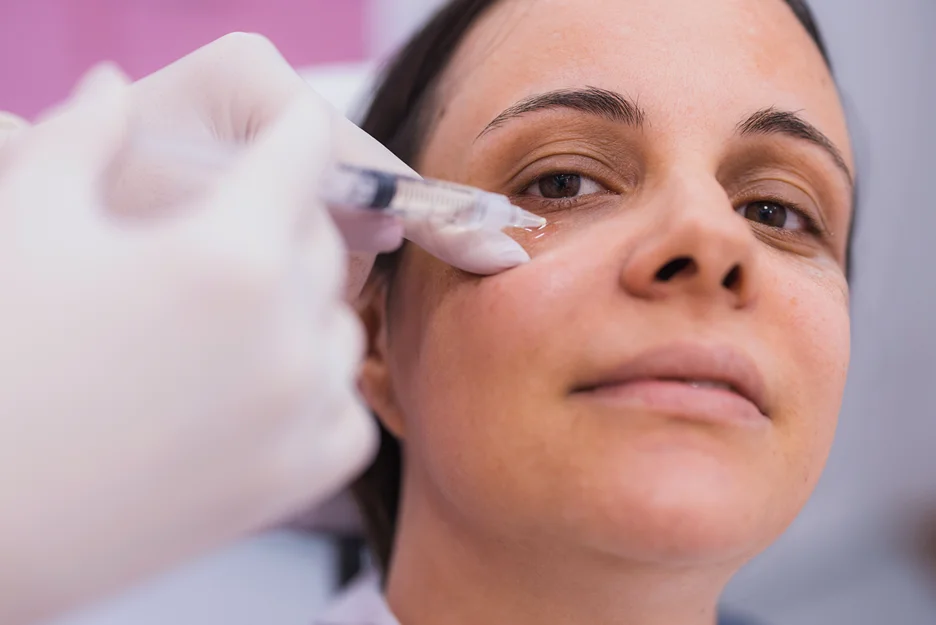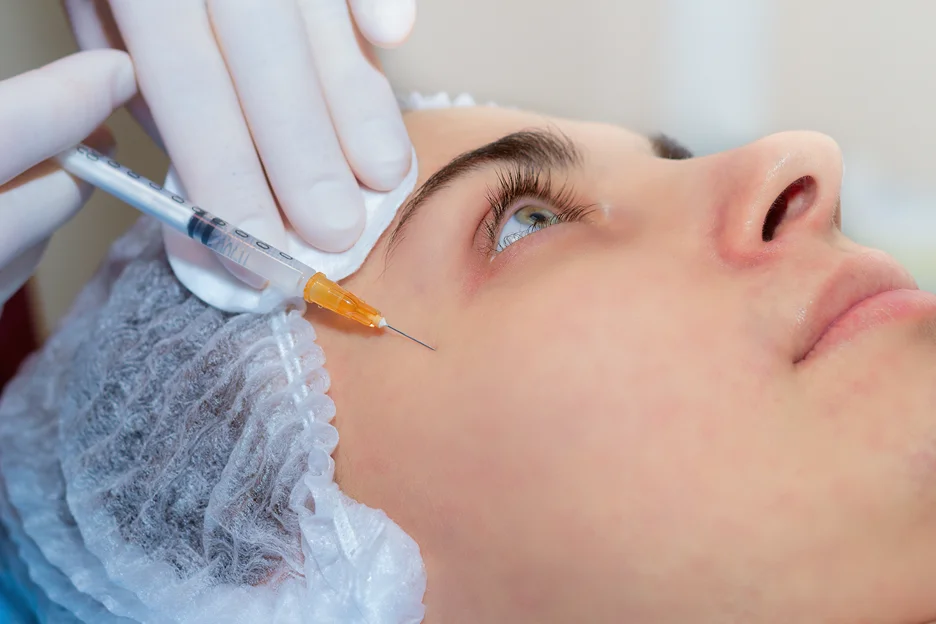Your face may still look flat after cheek fillers because you may need more filler, the filler wasn't placed correctly, an improper filler was used, or you're still experiencing swelling.
You finally took the plunge and had cheek filler injected, hoping to achieve a sculpted, contoured appearance. But when the swelling and bruising subsided, your face still looked relatively flat. What gives?
Getting filler in the cheeks can add volume and definition to the midface, restoring a more youthful look. When performed correctly, cheek fillers can seemingly lift sagging skin, minimize the nasolabial folds, and give the illusion of higher, more pronounced cheekbones. However, it’s not uncommon for patients to feel let down by the results, especially if they went into the procedure with unrealistic expectations.
There are several possible reasons your face may still appear flat after filler:

The amount of filler required to achieve your desired look depends on a few factors, including:
Some individuals require more filler than others to see a significant improvement in contour and projection. It’s possible that you simply didn’t get enough filler to create the look you want.
As a general guideline:
However, there’s no universal rule. The ideal filler amount must be customized based on your unique needs and facial anatomy. Don’t be afraid to ask your provider if additional filler is required to achieve optimal improvement in contour and fullness.
Filler placement technique is just as important as the amount injected. If the filler wasn’t deposited in the right locations, you won’t see the desired lifting and sculpting effect.
Some key cheek filler injection sites include:
Take a look at before and after photos of properly placed cheek filler. If your provider didn’t focus on these precise areas, the filler likely didn’t hit the right spots to sculpt and contour your face.
Not all dermal fillers are created equal. The choice of filler matters just as much as the injection technique and placement.
Hyaluronic acid fillers like Juvederm Voluma and Restylane Lyft are commonly used in the midface. But other products like Radiesse and Sculptra work in slightly different ways and may produce alternative outcomes.
Dermal filler substance, size, concentration, stiffness, hydration, and linkages all impact the final result. Your provider should have selected the appropriate filler based on your individual needs and facial anatomy. If an improper filler was chosen, it may not have delivered the desired degree of projection and definition.
It’s completely normal for your cheeks to be swollen and bruised for days or even weeks after filler injections. In some cases, significant swelling can last for several months. This inflammation can temporarily obscure the results and make it difficult to appreciate the full effects.
Be patient. Allow the swelling to fully subside before determining if additional filler is warranted. The end outcomes often look more pronounced after this initial swelling resolves.
The underlying structure of your facial tissues, muscles, fat, and bones plays a major role in the ultimate improvements possible with cheek filler. Filler can enhance and augment what’s already there, but it doesn’t fundamentally alter your anatomy.
Individuals with flatter midfaces related to their bone structure may not see dramatic changes in contour and projection, even with significant amounts of filler. Filler has its limits in those with inherently wider, flatter cheekbones and faces. That said, enhancements are still possible in most patients.
If you’ve had conservative amounts of filler but your midface still lacks adequate fullness, don’t lose hope. You still have options:
The simplest solution is to keep increasing filler until your desired improvement is achieved. Be aware that there’s a limit to how much any area can safely hold, but moderate amounts of additional filler may get you to where you want to be. Communicate with your provider about precisely which parts of your cheeks still need more volume.
Take things slowly and allow adequate time between appointments for the filler to fully integrate. Rushing the process risks overfilling and an artificial, distorted appearance. Patience is key.
If your provider used a lightweight hyaluronic acid filler initially, considering switching to a more substantial option like Voluma or Radiesse. These denser fillers tend to provide greater lift and structure. Combining different filler types can also allow for more customization and precision.
Fat grafting transfers your body’s own fat to the face for natural-looking, permanent results. It’s more involved than injectable fillers but can afford supremely smooth, nuanced, proportional volume. And the filler essentially becomes “permanent” since it’s your own tissue. Discuss this option with your cosmetic surgeon.
For significant midface enhancement, cheek implants may be preferable to large amounts of filler over time. Implants provide reliable, fixed augmentation with no need for upkeep injections. On the downside, implants require surgery and have a higher risk profile including implant displacement and noticeable edges.
Devices like Ultherapy use focused ultrasound to tighten and lift the skin of the mid and lower face. Tighter overlying skin can make properly placed filler look even more volumizing. Combination therapies often yield the best outcomes.

When performed correctly, dermal filler sculpting can greatly improve facial balance and aesthetically enhance your cheeks. But several factors must align to achieve gorgeous, subtle results that don’t look overdone. Here are some best practices to keep in mind:
With proper education, communication, and custom treatment planning, cheek filler can give fantastic improvements in contour and renewed youthfulness. Partner closely with an experienced injector to devise the ideal filler approach for your unique needs and facial anatomy. The rewards will be well worth it.

New Patients Enjoy $100 OFF on Tox or Filler Appointments!
*minimum 1 full syringe or minimum 25 units; Cannot be combined
